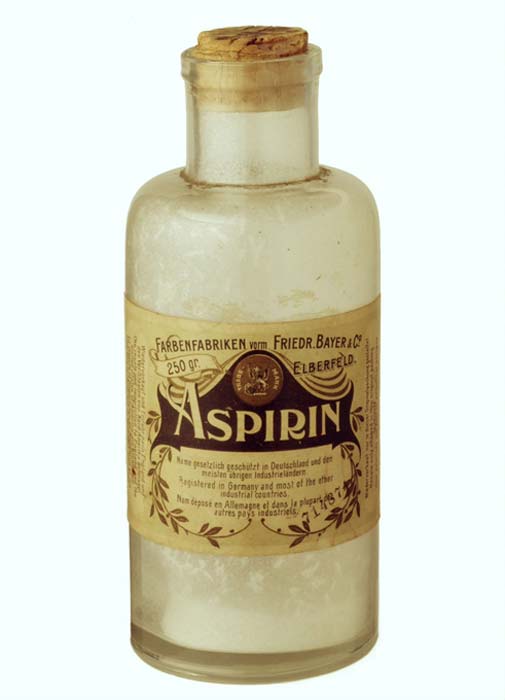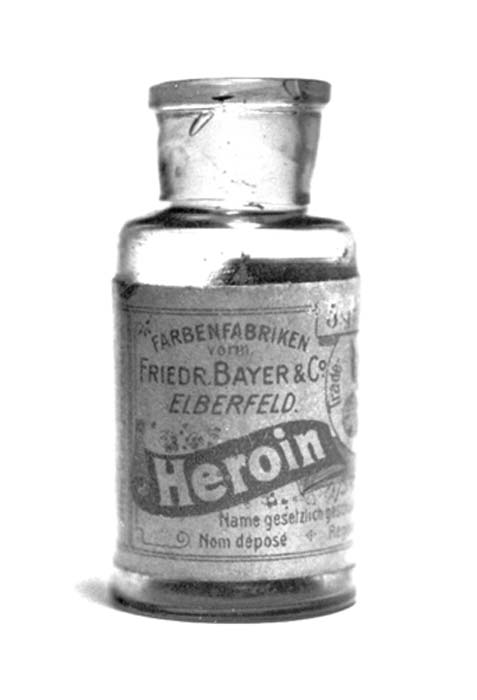Heroin: Killer Drug was Marketed and Sold by Bayer as a Non-Addictive Cough Syrup
Heroin is a deadly drug with a notorious reputation. It is considered to be a dangerous addiction-producing drug, and the abuse of this substance has extremely negative results on individuals and societies. Heroin, however, has not always been viewed in a negative light, as it was hailed as a wonder drug when it was first synthesized during the second half of the 19 th century.
Heroin became marketed as an over-the-counter drug by Bayer, especially in the form of cough syrup and was immensely popular. Nevertheless, the negative effects of this drug soon became apparent and efforts were made to combat its abuse.

Opium Smokers - 19th century. (Erica Guilane-Nachez / Adobe)
Where Does Heroin Originate?
Heroin belongs to a drug class known as opioids, which includes opiates, i.e. drugs derived from opium. Therefore, before considering the history of heroin, it would be necessary to first take a look at the history of opium.
Opium Was Used in Ancient Mesopotamia
Opium is a type of drug manufactured from the sap of opium poppies. The cultivation of this plant has been traced back to ancient Mesopotamia and was initially used by the ancient Egyptians and Persians. Although opium was used for medicinal purposes, it was only towards the end of the 18 th century that some physicians began to recognize the addictive quality of this drug.

Opium poppy head, plants for medicine or drugs. (weerayut / Adobe)
Morphine and Codeine are Byproducts of Opium
In 1805, morphine and codeine were isolated from opium. Morphine was developed into a painkiller and was used to eliminate severe pain caused by medical surgeries or traumatic injuries. Additionally, morphine was used to treat opium addiction. Be that as it may, morphine addiction and abuse became a new problem, though it became apparent only after the American Civil War. Incidentally, morphine is named after the Greek god of dreams, Morpheus, as it induced a euphoric, dream-like state of mind in those who took it.

Dried poppy seeds. (HLPhoto / Adobe)
Heroin is Derived from Morphine
In 1874, Charles Romley Alder Wright, a chemist at St. Mary’s Hospital in London succeeded in synthesizing heroin from morphine. The primary aim of his work at that time was to determine the constitution of certain natural and purified alkaloids. Wright boiled anhydrous morphine alkaloid with a compound known as acetic anhydride for several hours, just to see what would happen. The result of Wright’s experiment was a new compound which he termed ‘ Tetra acetyl morphine’, which corresponds to diacetylmorphine in current nomenclature. Essentially, this was a more potent version of morphine. Nevertheless, apart from a few experiments conducted on animals, the new compound did not receive much attention from either the medical or scientific community.

Drug opium poppy inside the syringe. Deadly drug addiction.(adragan / Adobe)
Heroin Makes a Come Back
It was only towards the end of the 19 th century that heroin was ‘re-discovered’ and began to be produced commercially. In 1897, a German chemist by the name of Felix Hoffmann succeeded in synthesizing heroin when he was trying to produce codeine. Hoffmann was working for the German pharmaceutical company Bayer, and his work caught the attention of Heinrich Dreser, his supervisor and head of the company’s pharmacological laboratory.

Heinrich Dreser in the Pharmacological Laboratory of Bayer 1897. (Bayer / Public Domain)
Heroin Reins Over Aspirin
Heroin was found to be much stronger than morphine and Dreser decided to concentrate on the development of this drug, rather than on another newly created one, aspirin. Having experimented on animals, heroin was tested on humans, primarily the employees at Bayer including Dreser himself. The trials were a success and the drug was presented to the Congress of German Naturalists and Physicians as a miracle drug.
- Drugs in Ancient Cultures: A History of Drug Use and Effects
- New Research Provides First Peek at Ancient Mesopotamian Drug Use
- Were the works of Shakespeare inspired by Cannabis? Scientists find traces of drugs on pipes
- Secret Stash of Lethal Poisons Hidden in 17th Century Book. Was This Really an Assassin's Cabinet?

Bottle with aspirin, 1899. (Bayer AG / CC BY-SA 2.0)
Heroin Becomes Mainstream
In 1898, heroin began to be commercially produced by Bayer. It was also at this time that the drug gained its trademark name, ‘Heroin’, which apparently was derived from the German ‘heroisch’ meaning ‘strong’ and ‘heroic’. Heroin was not sold directly to the public, but to physicians, who would then sell it as an over-the-counter drug in a variety of forms. Among others, heroin could be made into tablets, made into an elixir by mixing it in a glycerin solution, and made into water-soluble heroin salts.

Bayer heroin bottle from the 1920's, originally containing 5 grams of Heroin substance. (Mpv_51 / Public Domain)
Heroin Gets Added to Cough Syrups
Dreser, however, was in favor of mixing heroin in cough syrups and promoted its use as a medicine for treating respiratory problems such as asthma, bronchitis, and tuberculosis. Heroin was marketed as having almost no toxic effects and that it was non-addictive. This was a major advantage of heroin over its rival codeine, which was also widely used at that time to treat these respiratory problems.

Advertisement for Heroin, around 1900. (Michael de Ridder / Public Domain)
The Surprise that Heroin is Addictive Did Not Stop Production
The claim that heroin is non-addictive soon proved to be false, and reports of addiction soon appeared shortly after its release. Nevertheless, heroin continued to be used widely until the early 20 th century. It was only when the number of heroin addicts skyrocketed that the public became alarmed and a number of countries decided to ban the drug. As a result, in 1913, Bayer ceased its production of heroin.

Advertisement for Bayer Heroin before 1904. (BayerHeroin / Public Domain)
Top image: Still life with skull and withered opium head. Source: doidam10 / Adobe
By Wu Mingren
References
Drahl, C., 2017. Five Things To Know About Heroin's Curious Chemistry History. [Online] Available at: https://www.forbes.com/sites/carmendrahl/2017/06/12/five-things-heroins-curious-chemistry-history/#40b04fa1157c
Hiskey, D., 2012. The Pharmaceutical Company Bayer Coined the Name “Heroin” and Marketed the Drug as a Non-Addictive Cough Medicine. [Online] Available at: http://www.todayifoundout.com/index.php/2012/02/the-pharmaceutical-company-bayer-coined-the-name-heroin-and-marketed-the-drug-as-a-non-addictive-cough-medicine/
Kelvey, J., 2018. How Advertising Shaped the First Opioid Epidemic. [Online] Available at: https://www.smithsonianmag.com/science-nature/how-advertising-shaped-first-opioid-epidemic-180968444/
MethOIDE, University of Arizona, 2018. Heroin Overview: Origin and History. [Online] Available at: https://methoide.fcm.arizona.edu/infocenter/index.cfm?stid=174
Moore, D., 2014. Heroin: A brief history of unintended consequences. [Online] Available at: https://www.timesunion.com/upstate/article/Heroin-A-brief-history-of-unintended-consequences-5705610.php
Narconon, 2018. History of Heroin. [Online] Available at: https://www.narconon.org/drug-information/heroin-history.html
UNODC, 2018. History of Heroin. [Online] Available at: https://www.unodc.org/unodc/en/data-and-analysis/bulletin/bulletin_1953-01-01_2_page004.html



















